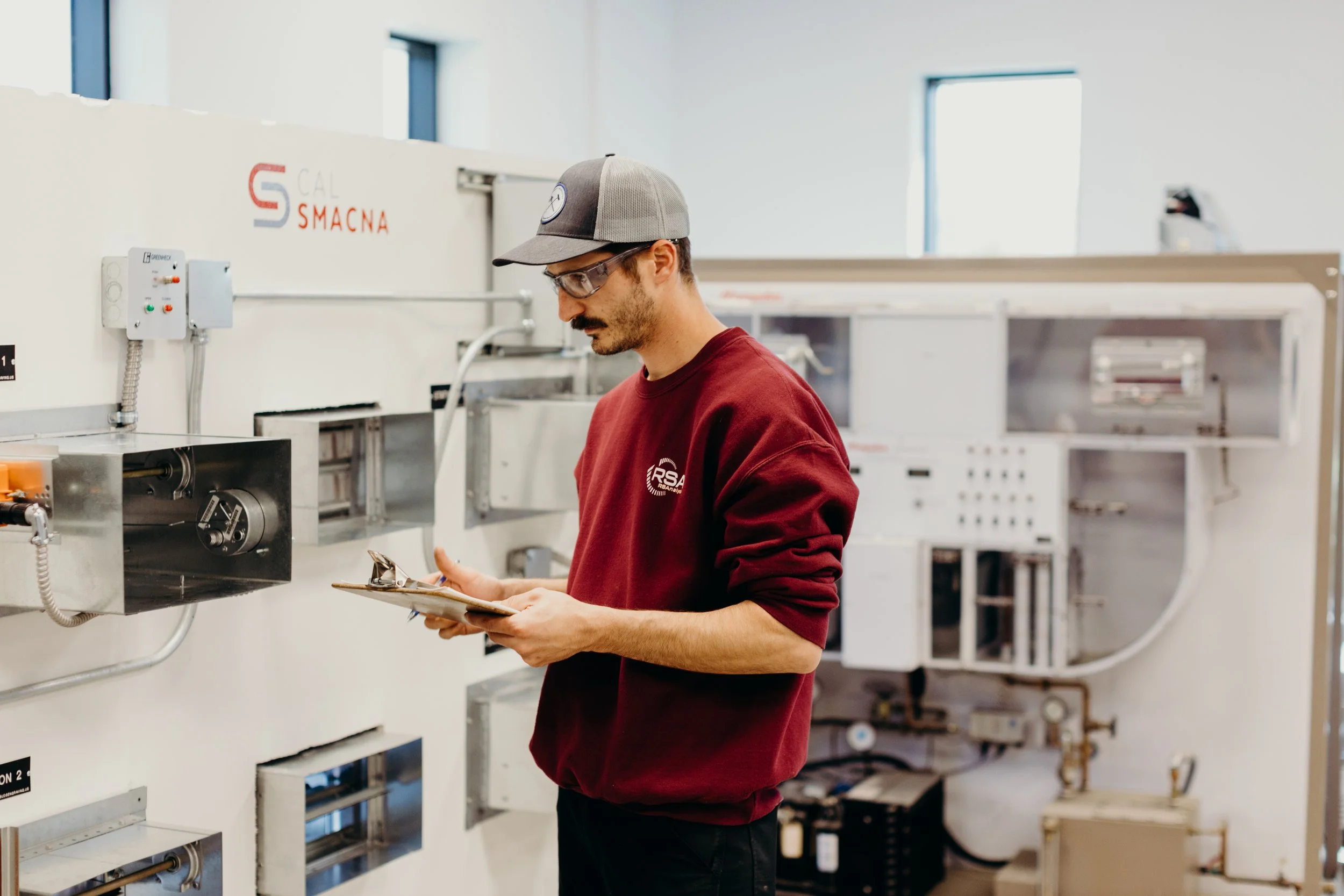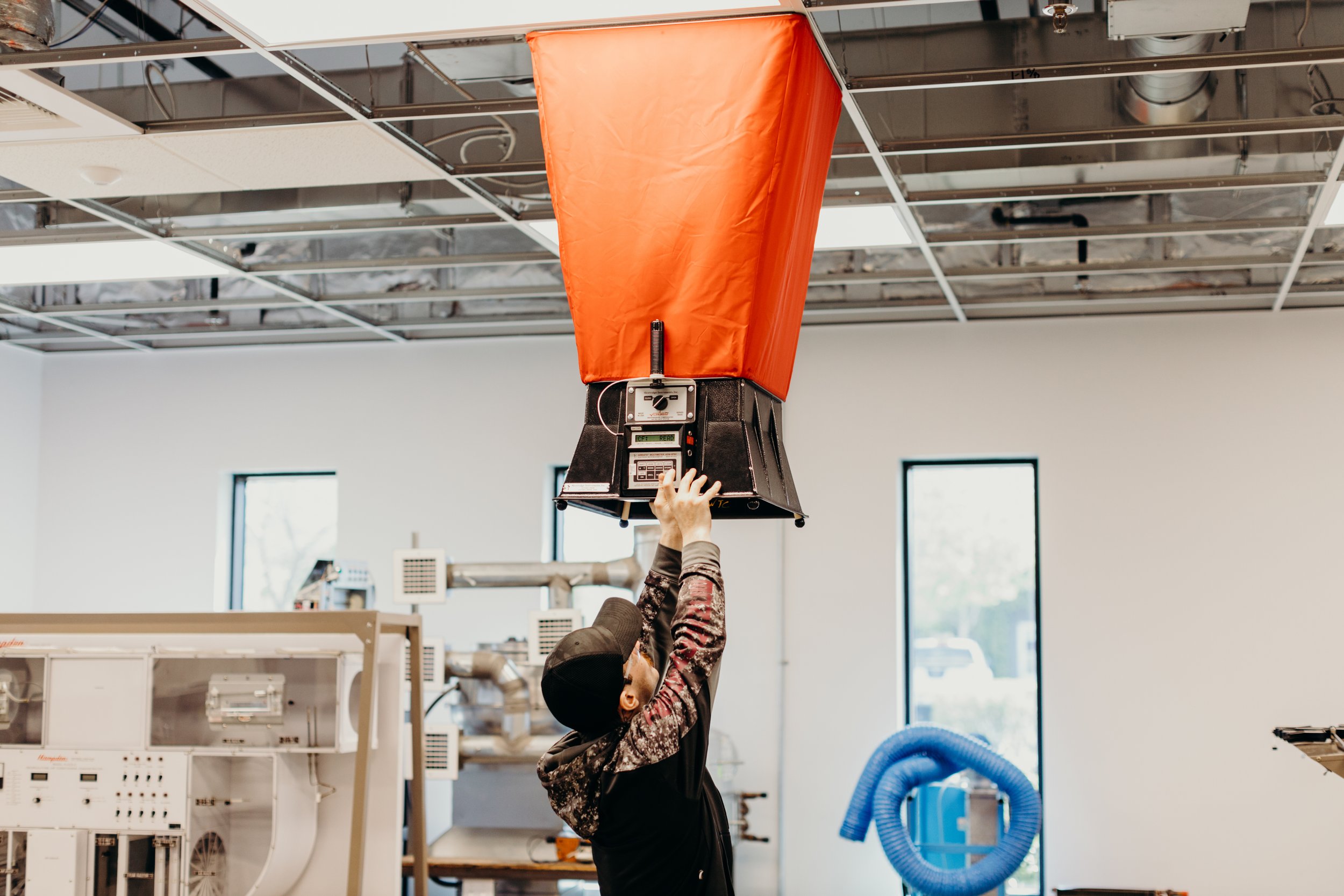2025 California Mechanical Code Updates
Effective for all projects permitted on or after January 1, 2026
The 2025 CMC now establishes clear, enforceable standards for certified Testing, Adjusting, Balancing (TAB), Duct Leakage Testing, and sealing of HVAC systems. This elevates quality, ensures energy performance, and creates a level playing field for all contractors meeting professional certification standards.
Certified TAB Technicians Now Required
• All Testing, Adjusting, and Balancing (TAB) and Duct Leakage Testing must be performed by a technician certified by an approved agency.
Approved certification agencies:
• TABB – Testing, Adjusting, and Balancing Bureau
• AABC – Associated Air Balance Council
• NEBB – National Environmental Balancing Bureau
• Or another equivalent agency approved by the Authority Having Jurisdiction (AHJ).
Affected sections:
§403.10 Air Balance – All mechanical ventilation systems (except single-family homes)
§603.9.2 Duct Leakage Tests – All duct leakage testing
Appendix I (Indoor Horticulture Facilities) – Mechanical ventilation systems in grow facilities
This change ensures that only trained and certified TAB professionals perform system verification and duct leakage testing.
SMACNA Manual Now Referenced in the Code
§314.1 Balancing – The SMACNA HVAC Systems Testing, Adjusting & Balancing Manual is now one of the recognized balancing standards.
This is the procedural manual used by TABB, making it easier for engineers and contractors to specify TABB-certified testing in project documents.
Recognized balancing standards include:
• AABC National Standards for Total System Balance
• ACCA Manual B
• ASHRAE 111
• NEBB Procedural Standards for TAB of Environmental Systems
• SMACNA HVAC Systems Testing, Adjusting & Balancing
Seal Class A – Required on All Ducts
§603.1.1 & 603.9 Installation of Ducts
All ducts, regardless of pressure classification, must now be sealed to
Seal Class A.
Seal Class A = all transverse joints, longitudinal seams, and duct wall penetrations must be sealed.
Most union SMACNA contractors already meet this standard, but this change now requires all competitors to perform at the same level of quality and airtightness.
Fire & Smoke Damper Testing
§606.6 Periodic Testing and Inspection
Fire and Smoke Damper Periodic Testing – Now in the Mechanical Code
The California Mechanical Code will now mirror the California Fire Code. It will require that all fire, smoke, and combination fire/smoke dampers be periodically tested and inspected in accordance with the following standards:
• Smoke Dampers: NFPA 105
• Fire Dampers: NFPA 80
• Combination Fire/Smoke Dampers: NFPA 80 & NFPA 105
While these requirements have previously existed in the California Fire Code, they are now formally adopted into the California Mechanical Code, strengthening enforcement and aligning with our ongoing effort to ensure periodic testing and certification of Fire Smoke Dampers (FSDs) statewide.
If you have any questions or need further clarification, please contact
Chris Ruch, Codes & Standards Representative
SMART, Sheet Metal Workers’ Local Union No. 104
chrisr@smw104.org


